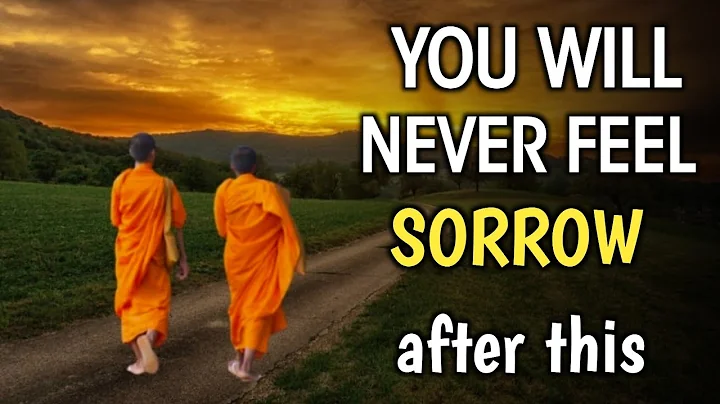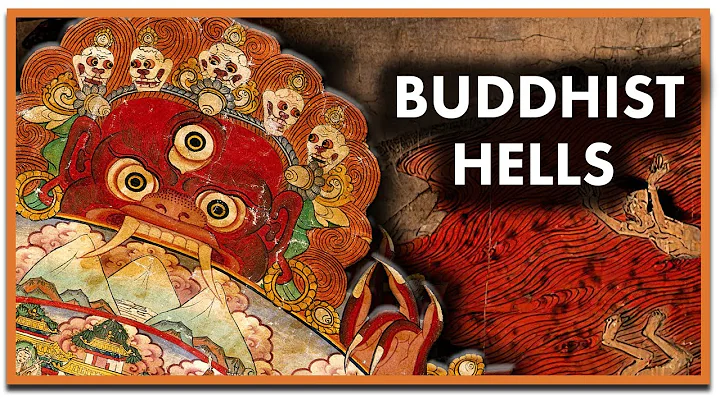In many film and television dramas, as long as Buddha and Guanyin Bodhisattva appear, you can always see a round and glowing halo behind their heads. How did this halo come about? Is it for the good look?
01
We often see Buddha , Bodhisattvas, and saints above and behind their heads, there will always be a "halo" that shines golden and shows a sense of sacredness. Are you particularly curious about what it is?
In fact, the design of a halo on the top of the head originated from the ancient Indian Buddhist statue art. Later, it gradually spread from India to all over the world. Painters borrowed the art of the Buddha statue and followed suit. When drawing portraits of gods and saints from all walks of life, they all drew a halo behind their heads.

02
This halo has a professional term called "backlight". So, what does "backlight" mainly mean? Is it used to set off the visual effect?
Backlight is the light of wisdom of Buddhas and Bodhisattvas. In Buddhist statue art, a certain Buddhist spiritual connotation is often used to symbolize matter or form, and backlight is no exception.
"Sutra for the Measurement of Figures", "Long Agama Sutra", "Middle Agama Sutra", " Great Wisdom Treatise " and other scriptures all talk about the thirty-two aspects of the Buddha. The thirty-two figures, also known as the thirty-two real men, are the solemn virtues possessed by the Buddha.
The backlight of the stone Buddha statue is to express the "white hair between the eyebrows" and "long light one meter" among the thirty-two aspects of the Buddha. "White hair between eyebrows" means that there is white hair between the eyebrows, soft and right, and always shines brightly. It is the wonderful appearance that the Buddha sees sentient beings practicing the three studies of precepts, concentration and wisdom, and rejoices and praises; it means that the heart is clear and pure, and that you can see the subtle state of light of tens of billions of Buddhas.
"Long light is one zhang", that is, a golden light is often emitted around the Buddha's body. It is a good appearance that the Buddha has developed great Bodhicitta and practiced great things such as infinite faith, aspirations and practice. This good appearance indicates that it can eliminate doubts and karma, and all wishes can be satisfied.

03
Therefore, the backlight of the Buddha statue is the light of wisdom, symbolizing light, and representing the Buddha's wisdom and realm of enlightenment. Backlight also has many mysteries. Backlight is one of the important characteristics of Buddhist statues. It has a profound historical origin, expresses the spiritual connotation of Buddhism, and integrates the culture and aesthetics of the times.
Observe carefully and you will definitely find that backlight has many wonderful features.
Backlight actually includes headlight and bodylight. Headlight is the embodiment of "white hair between eyebrows", and bodylight is the embodiment of "long-lasting light". Generally speaking, only Buddhas have headlight and body light, while Bodhisattvas have headlight. This is because the level of practice is different.
Of course, in some Buddhist paintings, in view of the need for decoration, some great Bodhisattvas not only have headlights, but also backlights; the Śrāvakas and Dharma protectors have headlights to indicate their sacred status.

04
In the early days of the Buddha statue's creation, Buddha's light was just a halo, but with the development of the times, backlights in each period have their own characteristics and are inherited. From Kucha Grottoes to Dunhuang Mogao Grottoes, Tianshui Maijishan Grottoes, and to the Yungang Grottoes and Luoyang Longmen Grottoes, backlit decorative patterns emerge one after another.
It can be seen from the naked eye that the changes in the times and the changes in the art of statues have directly created a colorful backlight shape. The most common backlit patterns are auspicious cloud curling grass and auspicious animals. Common headlight styles include disc shape, auspicious pattern shape and flame shape.
Common body light patterns include round, boat, flame, lotus petal, orb, etc. "Disc-shaped" backlight has appeared since ancient times in India's Gandhara period, and most of them are discs without decorative images. The backlighted appearance of Buddhist sculptures mainly in round shape usually symbolizes perfection and harmony.
Whether in Buddhism or in traditional Chinese culture, flames are regarded as auspicious things and are a symbol of Chinese culture.
"flame" backlight appeared earlier, and it was different in each dynasty. Northern Zhou and Hours during the Sui Dynasty, the backlight was the prototype of "flame shape"; in Northern Liang, the backlight of Buddha statue sculptures began to use "flame pattern". After that, it became more mature and complex.
"Auspicious Pattern" is the most widely used decoration for backlighting. It has a wide variety, common ones include lotus, , , and lumpy flowers, which can exist in the overall backlight. The use of this pattern reached its peak from Northern Wei to Tang Dynasty and continued until the Yuan Dynasty, delicately engraving the dignity and solemnity of the Buddha, the noble and gorgeousness of the Bodhisattva, and the dignity and dignity of the disciples.
"water twisted shape" is relatively rare, it is a backlight shape that suddenly appeared in the period in the Tang Dynasty. It simulates a rainbow and depicts it to draw on this meaning to express the sacred Buddha light. Wise people shine brightly. Not only Buddhas and Bodhisattvas, but each of us also has our own "halo".

05
We meet kind, friendly and wise people in the world, and always feel that they are emitting the light of wisdom, attracting us to get close, praise, and get along and communicate with them more.
On the other hand, when encountering those sinister, cunning or full of negative energy, it is like encountering dim dark clouds. We always avoid it and do not want to join them.
"The Sutra of the Mahayana Hundred Blessings" introduces to you how the Buddha's thirty-two forms and eighty kinds of good blessings are cultivated.
" Manjushri . Such Tathagata The appearance of the great master. There are thirty-two types... One is a fleshy bun on the top, so it is round and it is high. The other is a blue color and its hair is right. The third is a broad, flat and strict forehead. The fourth is a white eyebrows and snow... This is called the Tathagata's blessing gathering."
, and all the blessings of the Tathagata's eighty followers are added to the infinite billions and hundreds of thousands of times, so that one of the thirty-two adult appearances in the Tathagata's body can be achieved. It can be seen how precious the thirty-two figures are and how extraordinary the merits are.
May each of us make great wishes and persist in practicing and doing good deeds; learn from Buddhas and Bodhisattvas, be the one who has "the head is light on the head and the body is light on the body". No matter where we go, we can bring smiles to others and illuminate the world.







![[English] Who Am I - Lecture 1 - Ven. Guan Cheng - DayDayNews](https://i.ytimg.com/vi/KU0fUs2It5o/hq720.jpg?sqp=-oaymwEcCNAFEJQDSFXyq4qpAw4IARUAAIhCGAFwAcABBg==&rs=AOn4CLDFpQUN_QwRfC7bmP4sUadq-RcYdg)
![A Moving Masterpiece 清明上河图 [English narration] - DayDayNews](https://i.ytimg.com/vi/kxff-4GktOI/hqdefault.jpg?sqp=-oaymwEcCOADEI4CSFXyq4qpAw4IARUAAIhCGAFwAcABBg==&rs=AOn4CLBtHGLeUpJNCYDJYnZTuISQ1N5Vag)


